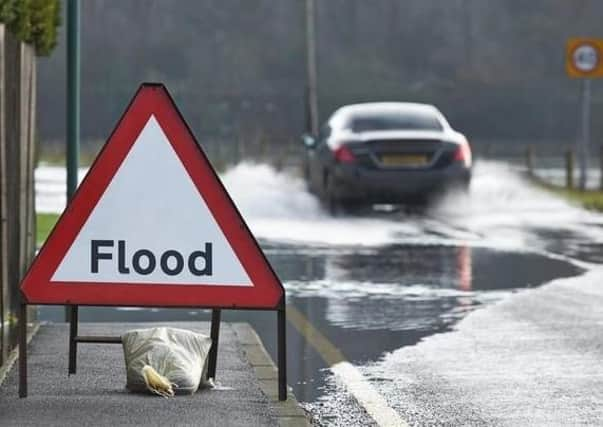Council bids to make Caistor High Road safer


Caistor High Road (B1225) is one of the main north-south routes in the county and carries an increasing volume of traffic, including HGVs.
Figures suggest it also has a ‘higher than average’ accident rate.
Advertisement
Hide AdAdvertisement
Hide AdThe road starts near Baumber where parish councillors are hoping recent work has put an end to more than a year of flooding issues.
Now, they are pressing ahead with a campaign to reduce speeding and make the road safer for vehicles and residents.
Parish council clerk Melvyn Grovesnor explained: “We very much appreciate the work done regarding flooding and hopefully that it is the end of it.
“There have been a series of accidents on that stretch of the road and we are concerned they will continue - unless the speed limit is lowered.”
Advertisement
Hide AdAdvertisement
Hide AdMr Grovesnor said the current 60mph limit was ‘dangerous’ and a recent survey - carried out by the Lincolnshire Road Safety Partnership - highlighted many vehicles were travelling much faster.
He explained that hopes the limit would be reduced were dashed because there are only houses on ‘one side of the road’.
He added: “Apparently, there need to be houses on both sides for it to be classed as urban, which would meet the criteria for a lower limit.
“However, we (the parish council) are determined to do something about it.
Advertisement
Hide AdAdvertisement
Hide Ad“That stretch of road is not safe. Speed is an issue and accidents will continue to happen.”
Mr Grovesnor said the parish council was working with the county council and the Road Safety Partnership in a bid to find a solution.
In addition to speeding, he said many residents had raised concerns about having to walk on a ‘very narrow’ pavement, within inches of fast-moving traffic.
Mr Grovesnor explained the parish council had considered buying a reactive speed sign but admitted the cost was a factor for a small parish council with a very limited budget.
Advertisement
Hide AdAdvertisement
Hide AdRegarding the road flooding, Mr Grovesnor confirmed the problem was reported to the county council several months ago, after a particularly wet spell of weather.
He explained the flooding appeared to be caused by blocked drains - and not the actual road itself.
However, he said flooding had occurred again more recently and contractors had discovered an issue with another drain.
The council installed temporary traffic lights for several days, leading to delays.
Advertisement
Hide AdAdvertisement
Hide AdRegarding the recent flooding, a county council spokesman said: “It was a blockage on private land. Often in circumstances like that, it would be the responsibility of the landowner but it looks like the drainage was changed about 50 years ago and adequate records not kept.
“We treated the drain as our own and sorted it (with permission from the landowner), because of its obvious detrimental effect on the highway.”
• Police confirmed they had been called to several road traffic collisions on that stretch of road, and added speed checks were in operation.